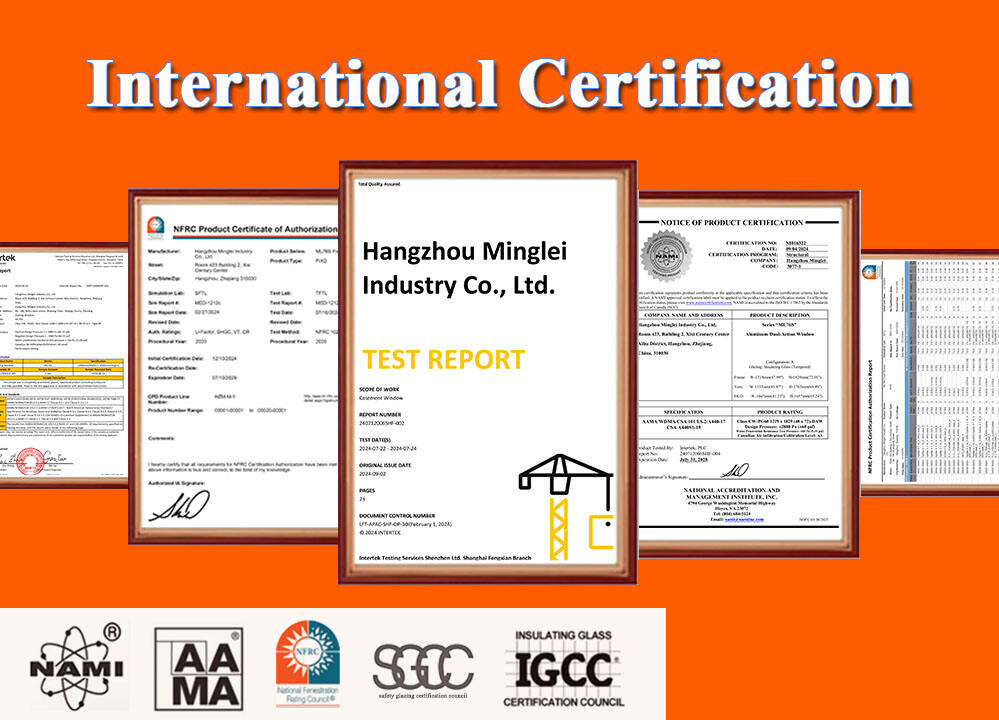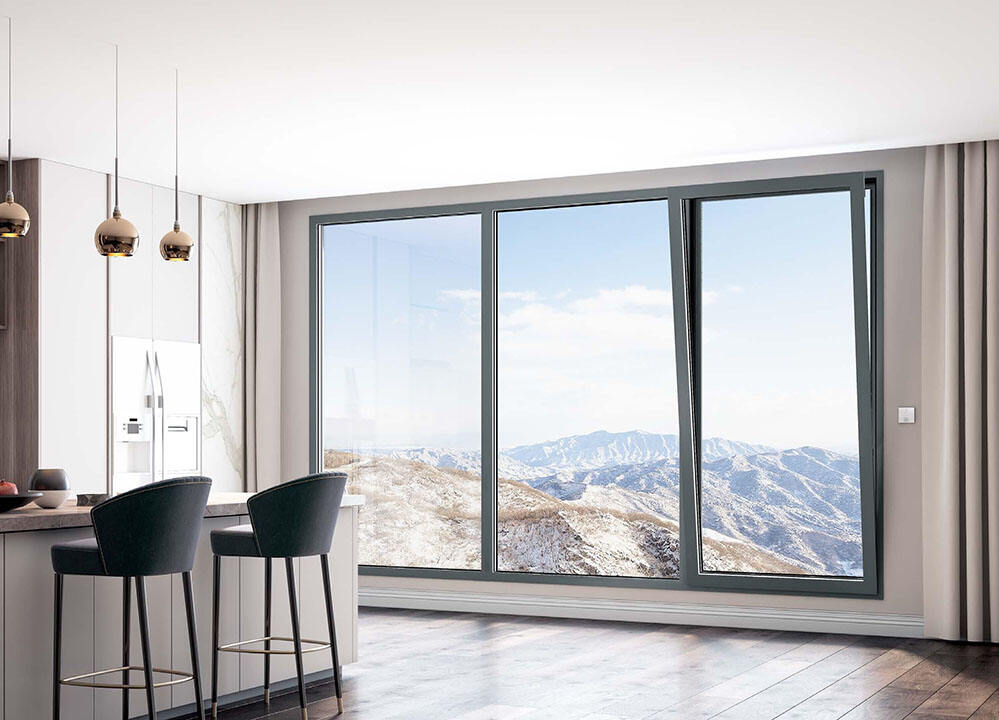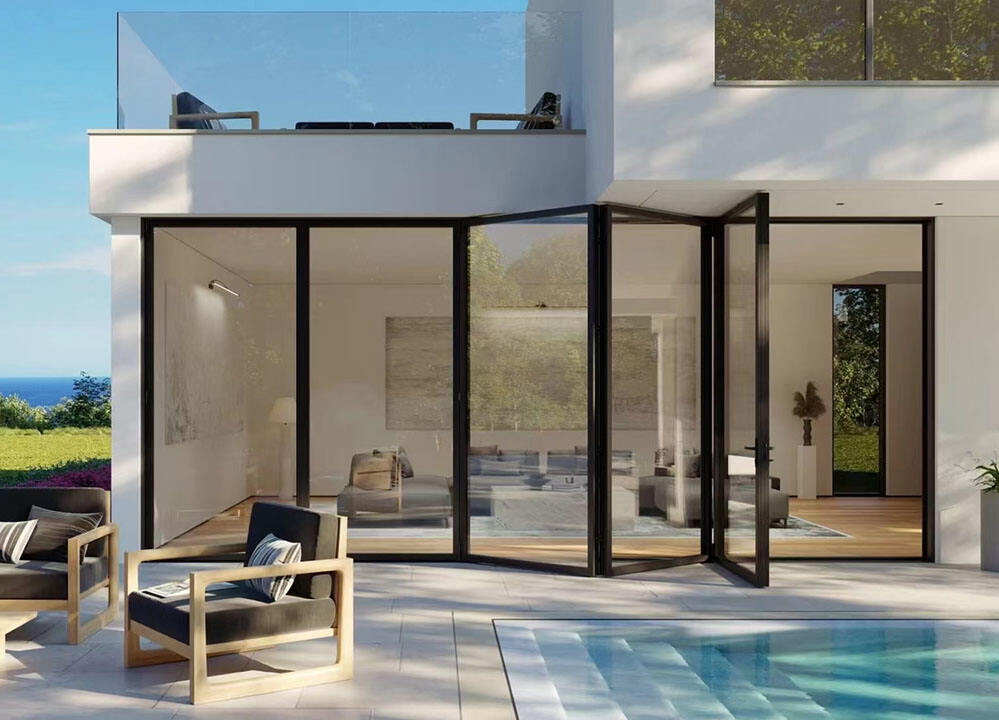Understanding U-Factor and Its Importance for Ultra-Efficient Aluminum Frames
What Is U-Factor and Why It Matters for Energy Efficiency
The U Factor basically tells us how good a window is at stopping heat from escaping, where smaller numbers mean better insulation properties. When it comes to aluminum frames specifically, getting those U Factors down below 0.18 presents quite a challenge because aluminum conducts heat so readily. The folks at the US Department of Energy have actually calculated that windows are responsible for somewhere between 25 and 30 percent of all energy spent on heating and cooling homes, which explains why these super efficient aluminum systems have become such a big deal in green building circles lately. Back in the day, old school aluminum windows had U Factors way over 1.0, but nowadays manufacturers have developed thermally broken designs that maintain the metal's inherent strength while providing insulation capabilities comparable to those seen in vinyl or wooden alternatives. These innovations represent a major leap forward for sustainable construction practices.
How Sub-0.30 U-Factor Defines High-Performance Windows
The 0.30 U-Factor threshold distinguishes standard from high-performance windows. Modern classification is as follows:
| U-Factor Range | Performance Tier | Typical Frame Material |
|---|---|---|
| 0.30–0.60 | Baseline Code Compliance | Non-thermally broken aluminum |
| 0.18–0.29 | Energy Star Certified | Thermally broken aluminum |
| <0.18 | Ultra-Efficient | Multi-chamber aluminum |
Today’s most advanced aluminum systems achieve U-Factors as low as 0.14 by integrating hybrid insulating materials and optimized frame geometries, closing performance gaps with uPVC and wood while offering greater durability and slimmer profiles.
NFRC Certification and Whole-Window U-Factor Measurement Standards
The National Fenestration Rating Council, or NFRC for short, rates whole window U-factors after putting frames, glass, and spacers through their paces all at once. This approach gives folks a better idea of how different materials stack up against each other when installed as complete units. Recent research from last year showed something interesting too: certified aluminum windows actually performed 12 percent better than regular old vinyl ones when tested outside in actual weather conditions. Architects and construction professionals are starting to take notice of these NFRC labels because they offer concrete numbers that bust myths about aluminum being a poor insulator. The ratings help professionals make informed decisions instead of relying on old school thinking about material performance.
Overcoming Aluminum’s Thermal Challenges with Advanced Frame Design
The Problem of Thermal Bridging in Standard Aluminum Frames
Aluminum conducts heat pretty well actually around 118 Btus per hour according to Construction Canada from 2023 which is why it tends to cause thermal bridging issues. When we look at standard aluminum frames without any modifications, they're responsible for roughly 20 percent of all heat loss through windows. That means heating and cooling systems have to work much harder whether it's freezing outside or sweltering hot. The problem gets worse because even when people install top notch glass, the aluminum frame still lets too much heat escape or enter depending on the season, making those expensive upgrades less effective than expected.
Thermally Broken Frames: How They Stop Heat Transfer
Aluminum frames that are thermally broken have these special insulating layers of either polyamide or polyurethane sandwiched between the inside and outside metal parts. The effect? These breaks cut down on heat transfer by somewhere around half to three quarters when compared with regular solid aluminum frames. This makes it possible to get U-Factors down near 0.17, which is pretty impressive for insulation performance. Some top manufacturers are taking things even further these days by adding chambers filled with aerogel material into their designs. What this does is boost the thermal resistance capabilities while still keeping all the strength properties intact that we need from aluminum structures.
Comparative Thermal Performance: Aluminum vs. Vinyl, Wood, and uPVC
While conventional aluminum lags behind vinyl (U-factor 0.50 vs. 0.23), modern thermal breaks reverse this trend:
| Material | Standard Frame U-Factor | Thermally Optimized U-Factor |
|---|---|---|
| Aluminum | 0.50 | 0.18–0.25 |
| Vinyl | 0.23 | 0.21 (max) |
| uPVC | N/A | 0.22 |
Data adapted from NFRC certification studies
With proper engineering, thermally optimized aluminum matches or exceeds the insulation of vinyl and uPVC while delivering superior strength, longevity, and design flexibility—making it ideal for commercial applications and passive house standards.
Core Innovations Enabling U-Factor Below 0.18 in Aluminum Systems
Advanced Polyamide Insulators and Multi-Chamber Profiles
To get U-Factors down below 0.18 in aluminum window frames, manufacturers need those high performance polyamide thermal breaks that conduct heat at less than 0.3 W per meter Kelvin. What these materials do is form an uninterrupted barrier separating the inside from outside temperatures. When we look at multi chamber profiles with their 3 to 5 separate air pockets, they actually cut down on heat loss through the frame by somewhere around 40 to maybe even 72 percent when compared to older single chamber designs. This makes a real difference in how well the whole window system performs overall.
Pour-and-Debridge and Structural Foam Integration Trends
The pour-and-debridge method gets rid of those pesky thermal bridges at important spots like corners by pouring liquid polyurethane into the frame cavities and then taking out the temporary bridge afterward. What this does is create what we call a seamless thermal break between components. Add structural foam to the mix and these systems can hit Ψ-values (those linear heat loss numbers) under 0.05 W/m·K. Some tests from last year found that frames with injected foam kept about 94% of their insulation effectiveness at the joints, while regular mechanical assemblies only managed around 78%. That makes a real difference when trying to maintain energy efficiency throughout the entire building envelope.
Optimizing Frame Geometry to Reduce Linear Thermal Transmittance
Advanced modeling allows precise shaping of aluminum profiles to minimize heat transfer. Asymmetric chamber layouts concentrate insulation near the interior edge, where temperature gradients are highest. Experimental trapezoidal chamber designs demonstrate 18% lower μ-values than rectangular counterparts under -18°C conditions, showcasing the impact of geometry on thermal performance.
Case Study: European Passive House Projects Using Ultra-Efficient Aluminum Frames
The Passive House-certified [Project A] in Frankfurt achieved a whole-window U-Factor of 0.16 using aluminum frames equipped with:
- 34mm polyamide thermal breaks
- Quadruple-glazed units with warm-edge spacers
- Aerogel-infused structural foam
Monitoring revealed an annual heating demand of 14.2 kWh/m²—63% below Germany’s national code—proving that aluminum can meet the strictest energy standards when engineered holistically.
Glazing Strategies That Push Aluminum Window Performance to the Limit
Triple Glazing with Low-E Coatings and Krypton Gas Fill
When it comes to getting those aluminum window U-factors down below 0.18, triple glazing with Low-E coatings plus krypton gas just works better. We're talking about a reduction of around 27 to 34 percent in heat transfer compared to regular argon filled double glazing according to some recent data from NFRC back in 2023. What makes this setup so effective? The Low-E coating on the inside actually bounces back infrared radiation without blocking out visible light, and because krypton is denser than air, it stops those pesky convective currents from forming between panes. A Thermal Performance Study released last year showed that when builders get these components right together, they can boost whole window performance by as much as 0.05 points in systems where the aluminum frame has been properly thermally broken. That might not sound like much, but for architects trying to meet strict energy codes, every fraction counts.
Spacer Technology and Edge-of-Glass Performance Impact
Traditional aluminum spacers create weak thermal zones at the glass edge. Warm-edge innovations address this:
- Polyurethane foam spacers offer 70% lower conductivity than metal
- Hybrid stainless steel/butyl rubber spacers reduce linear transmittance by 0.12 W/m²K
These solutions cut condensation risk and improve edge-of-glass U-factors by 15–20%, ensuring uniform performance across the entire unit.
How Gas Fills and Coatings Complement Thermally Broken Aluminum Frames
Krypton and xenon gas fills neutralize residual conduction paths in sealed glazing units. Paired with dual Low-E coatings—hard-coat on surface #2 and soft-coat on #3 in triple-glazed setups—they:
- Increase radiative heat reflection by 45%
- Reduce thermal stress on polyamide barriers
This integrated approach enables aluminum systems to reach U-factors of 0.17–0.19, matching premium vinyl performance while providing slimmer sightlines and 20% greater wind load resistance.
Resolving the Industry Paradox: Strength Meets Insulation in Modern Aluminum Design
Can Aluminum Compete with Vinyl or Wood on U-Factor?
Back in the day, aluminum wasn't great for energy efficiency because it conducts heat so easily when compared to materials like vinyl or wood. But things have changed quite a bit lately thanks to improvements in thermal break tech. Now we can get aluminum window frames with U-factors under 0.18, which actually beats out what most vinyl windows offer (they usually sit around 0.20 to 0.30). What this means is that builders no longer have to pick between strong frames and good insulation properties. The construction industry has really embraced aluminum again for projects where building performance matters most.
Data Insight: Thermally Broken Aluminum Now Matches uPVC Performance
Aluminum frames that are thermally optimized can reach whole window U factors between 0.16 and 0.19 when triple glazed, matching what we see from top end uPVC systems. Look at Passive House projects across Europe where builders use these multi chamber aluminum profiles with polyamide thermal breaks. The numbers tell us heating loads drop anywhere from 27% to 33% compared to regular designs according to recent industry data from last year. Sure, working with aluminum requires more advanced engineering techniques, but it pays off. The material has about four times the strength to weight ratio of vinyl, so architects get to create thinner frames and more interesting designs all while keeping those energy savings intact.
Frequently Asked Questions (FAQ)
What is the U-factor, and why is it important?
The U-factor measures how well a window prevents heat from escaping. Lower numbers indicate better insulation properties, making windows more energy-efficient.
How does a U-factor of less than 0.18 benefit aluminum frames?
Achieving a U-factor below 0.18 in aluminum frames means enhanced energy efficiency, comparable insulation properties to vinyl or wooden alternatives, and improved sustainability for buildings.
What advancements have been made in aluminum window technology?
Recent advancements include thermally broken designs, polyamide insulators, multi-chamber profiles, and hybrid insulating materials, all contributing to better insulation while maintaining aluminum's strength.
Why do thermally broken aluminum frames matter?
Thermally broken aluminum frames have insulating layers that significantly reduce heat transfer, making them highly effective for energy conservation.
How does aluminum compare to vinyl and wood in thermal performance?
Modern aluminum systems, with proper engineering and thermal breaks, can match or exceed the insulation performance of vinyl and wood while offering superior strength, longevity, and slimmer profiles.
Table of Contents
- Understanding U-Factor and Its Importance for Ultra-Efficient Aluminum Frames
- Overcoming Aluminum’s Thermal Challenges with Advanced Frame Design
- Core Innovations Enabling U-Factor Below 0.18 in Aluminum Systems
- Advanced Polyamide Insulators and Multi-Chamber Profiles
- Pour-and-Debridge and Structural Foam Integration Trends
- Optimizing Frame Geometry to Reduce Linear Thermal Transmittance
- Case Study: European Passive House Projects Using Ultra-Efficient Aluminum Frames
- Glazing Strategies That Push Aluminum Window Performance to the Limit
- Resolving the Industry Paradox: Strength Meets Insulation in Modern Aluminum Design
- Frequently Asked Questions (FAQ)
 EN
EN
 AR
AR
 CS
CS
 DA
DA
 NL
NL
 FI
FI
 FR
FR
 DE
DE
 EL
EL
 HI
HI
 IT
IT
 JA
JA
 KO
KO
 PL
PL
 PT
PT
 RU
RU
 ES
ES
 SV
SV
 IW
IW
 ID
ID
 LV
LV
 LT
LT
 SR
SR
 SK
SK
 SL
SL
 UK
UK
 VI
VI
 ET
ET
 HU
HU
 MT
MT
 TH
TH
 TR
TR
 FA
FA
 MS
MS
 GA
GA
 HY
HY
 UR
UR
 BN
BN
 GU
GU
 TA
TA














